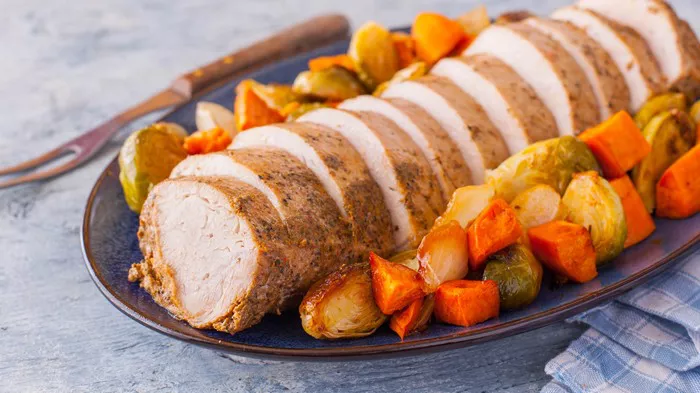The United States of America is a melting pot of cultures, and its cuisine reflects this rich diversity. From coast to coast, the country boasts a tapestry of flavors, each telling a story of its history, people, and heritage. Traditional American food encompasses a wide range of dishes that have been passed down through generations, shaping the nation’s culinary identity. In this exploration, we delve into the essence of traditional American food, celebrating the flavors that have stood the test of time.
A Culinary Mosaic: The Origins of American Cuisine
The roots of traditional American food are intertwined with the stories of Native American tribes, European settlers, African slaves, and immigrants from all corners of the globe. This fusion of cultures and ingredients has given rise to a unique culinary landscape that spans regional specialties, comfort foods, and iconic dishes that are synonymous with American culture.
1. Native American Influences: Corn, Beans, and Squash
Native American tribes cultivated a wide variety of crops, with corn, beans, and squash forming the “Three Sisters” of their agriculture. These ingredients not only sustained them but also laid the foundation for many American dishes. Succotash, a dish made from corn and beans, pays homage to these traditional ingredients. Additionally, cornbread, a staple in Southern cuisine, reflects the deep-rooted connection between Native American and European culinary influences.
2. Southern Comfort: Soul Food and Barbecue
The Southern United States is renowned for its soulful and hearty cuisine. Influenced by African, European, and Native American traditions, Southern food is comfort at its finest. Dishes like fried chicken, collard greens, cornbread, and biscuits are integral to Southern cuisine. Barbecue, another Southern staple, showcases various styles and techniques, from Texas brisket to Carolina pulled pork, each with its own distinct flavor profile and regional pride.
3. New England Clam Chowder: Coastal Delights
Coastal regions of the United States have a rich seafood tradition, with dishes like New England clam chowder capturing the essence of the sea. Creamy and hearty, this soup features tender clams, potatoes, and a touch of smoky bacon, reflecting the maritime heritage of the region.
4. Midwestern Classics: Hot Dogs and Apple Pie
The heartland of America, the Midwest, is famous for its classic comfort foods. Hot dogs, an enduring symbol of American cuisine, are often associated with baseball games and backyard barbecues. Similarly, apple pie is a beloved dessert that embodies warmth and nostalgia, often deemed as quintessentially American.
5. Tex-Mex and Southwestern Flavors
The American Southwest boasts a vibrant blend of Mexican and American influences, giving rise to Tex-Mex cuisine. Dishes like tacos, enchiladas, and quesadillas showcase the fusion of flavors and ingredients from both sides of the border. Spices, chilies, and a variety of cheeses contribute to the bold and satisfying profiles of Tex-Mex dishes.
6. Pacific Northwest Specialties: Salmon and Berries
The Pacific Northwest showcases the abundance of the land and sea. Salmon, a revered fish, is a central component of traditional diets for many Native American tribes. Whether smoked, grilled, or baked, salmon pays homage to the region’s natural resources. Additionally, the Pacific Northwest is known for its bountiful berry harvests, with huckleberries, blackberries, and raspberries finding their way into jams, pies, and desserts.
7. Creole and Cajun Traditions: Jambalaya and Gumbo
The vibrant cuisine of Louisiana’s Creole and Cajun communities is a testament to the blending of cultures. Dishes like jambalaya and gumbo embody the complex and layered flavors of this region. With a mix of French, African, Spanish, and Caribbean influences, Creole and Cajun cuisine boasts a spicy and savory profile that resonates with those seeking bold and memorable flavors.
8. Apple Cider and Pumpkin: Fall Favorites
As the leaves turn and the air becomes crisp, traditional American food takes on a cozy and festive tone. Apple cider, a quintessential autumn beverage, captures the essence of orchards and harvest festivals. Pumpkin, in the form of pies, lattes, and other treats, has become synonymous with fall and is eagerly awaited by many.
9. Modern Twists and Fusion Cuisine
While celebrating traditional American food, it’s important to recognize that American cuisine is continually evolving. Fusion cuisine, which combines flavors from various cultures, has become a hallmark of contemporary American dining. Dishes like sushi burritos, Korean BBQ tacos, and Vietnamese banh mi sandwiches showcase the melting pot of influences that continue to shape the nation’s food scene.
10. Fast Food and Street Eats
Fast food has become an iconic part of American culture, reflecting the country’s fast-paced lifestyle. Burgers, fries, and pizza are staples of the American diet, often enjoyed on the go. Street food culture has also thrived, with food trucks and carts offering diverse options ranging from gourmet grilled cheese sandwiches to international delicacies.
Conclusion
Traditional American food is a culinary tapestry woven with the threads of history, culture, and geography. From the shores of New England to the barbecue pits of the South, each region contributes to the diverse and flavorful mosaic that is American cuisine. Whether savoring a comforting bowl of clam chowder or indulging in a slice of apple pie, traditional American food connects us to our roots and the stories of those who came before us. As the nation continues to evolve, the spirit of innovation and creativity in the kitchen ensures that traditional American food remains a dynamic and cherished part of the American experience.























